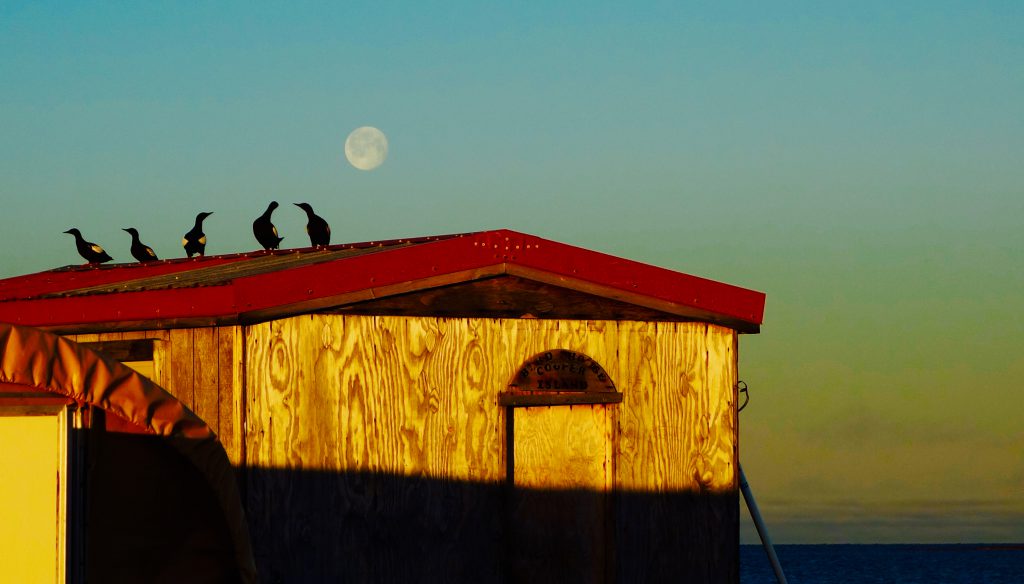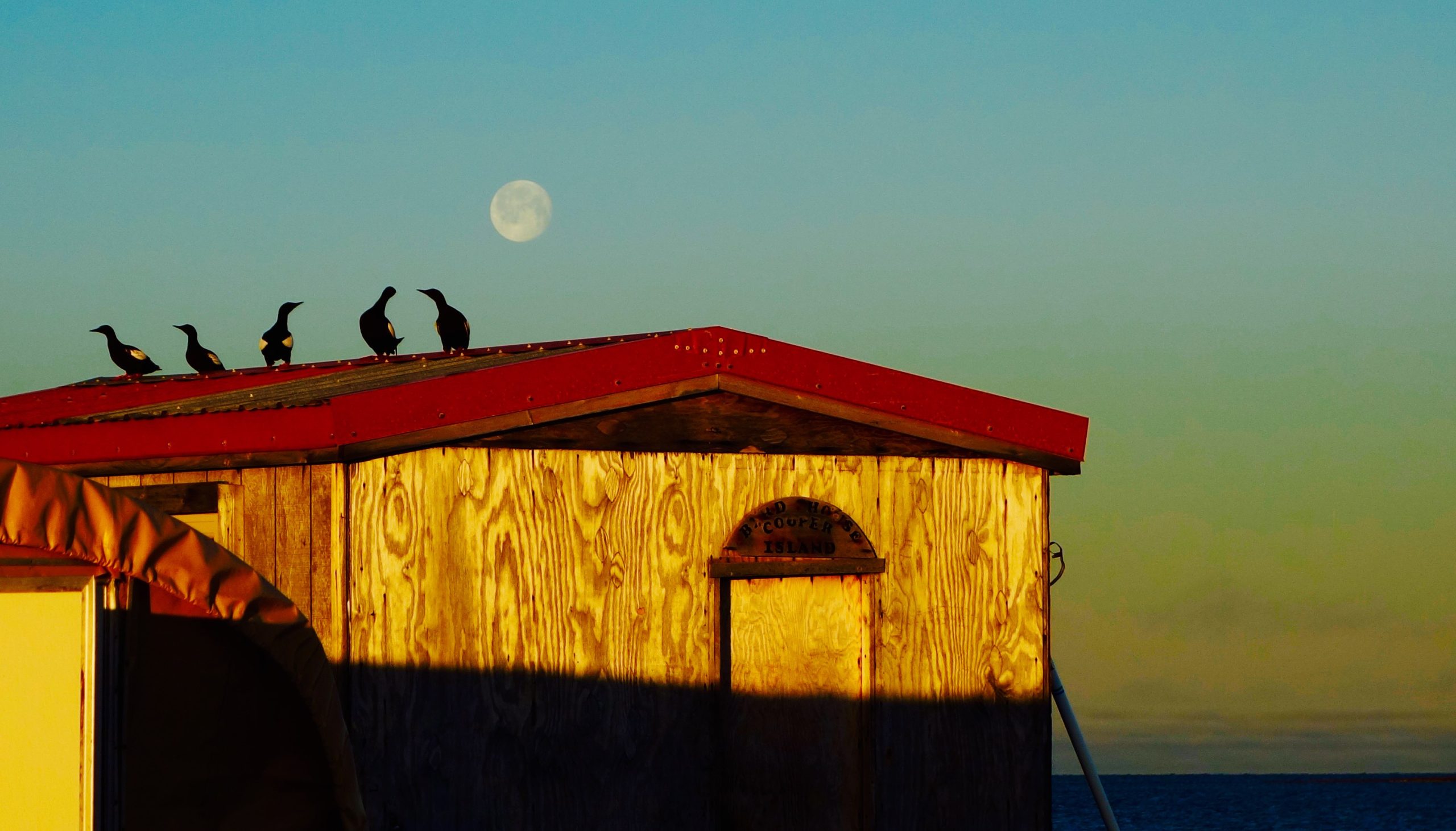
Polar bears caused me to get a cabin on Cooper Island in 2003. After a rapid retreat of sea ice in August 2002, bears trashed our tents, which required making a hasty departure from the island with the help of a North Slope Borough Search and Rescue helicopter. The first week of the 2019 field season found me again living in a tent as I cleaned up after a polar bear was able to remove the board covering the cabin door and rearrange much of the gear and supplies I store on the island overwinter. Damage was not major but making my 8- by 12-foot summer home habitable took time.
Luckily the first week’s tedium of camp housekeeping was balanced with daily indications that the Black Guillemot’s 2019 breeding season would not be a repeat of last year, when colony size and productivity had major decreases related to the poor survival and breeding condition of adults. Of the 75 nest sites occupied last year, only 25 had pairs that incubated eggs. This year a similar number of nests are occupied but all of those have birds diligently attending eggs.
The reasons for the difference in the two years is not yet clear. Both breeding seasons were preceded by a previously unprecedented lack of sea ice in the Bering Sea wintering area. Geolocation data loggers I am retrieving from some of the birds will allow comparison of the overwinter movements and distribution for the two years and may provide an answer.
Another indication of the health of the colony in 2019 is the number of first-time breeders. Long-term annual mortality of established breeders is approximately ten percent, and a stable population requires enough new recruits each year to occupy the vacancies. Unlike many recent years, this year saw a substantial number of previously nonbreeding local birds (individuals fledged from Cooper Island) and immigrants occupying those vacancies and even pairing up with each other to breed in sites not occupied last summer – something that has been rare in the period of colony decline in recent decades.
Another major highlight of the first week of censusing was the sighting of a bird fledged in 2017, a year when the colony experienced large-scale nestling mortality. The season was documented by Hannah Waters in Audubon magazine. The two-year old bird sighted this year was raised in the nest featured in the Audubon cover image by Peter Mather; it shows a female parent about to enter a nest with a sculpin. The story emphasized how the colony’s survival in a melting Arctic would require a few individuals to be able to provision young from ice-free waters and for those young to return to breed. While the 2017 offspring sighted this year is not breeding, few birds breed earlier than three years of age, its return to Cooper combined with the other positive signs of colony health in 2019, provide reasons for some early season optimism.
